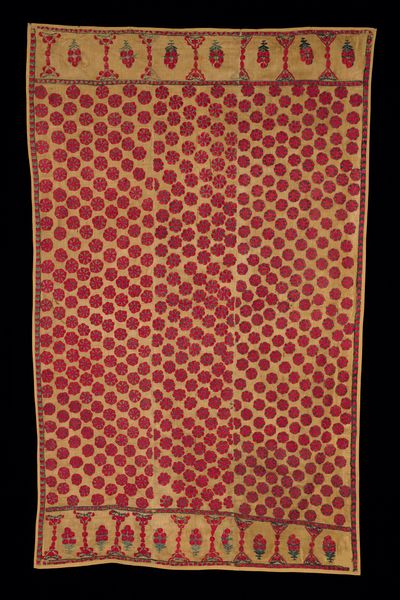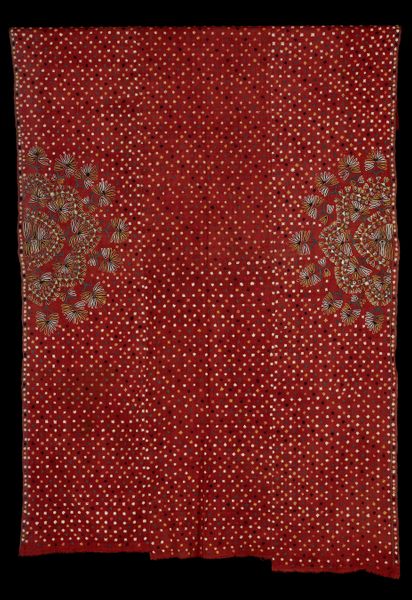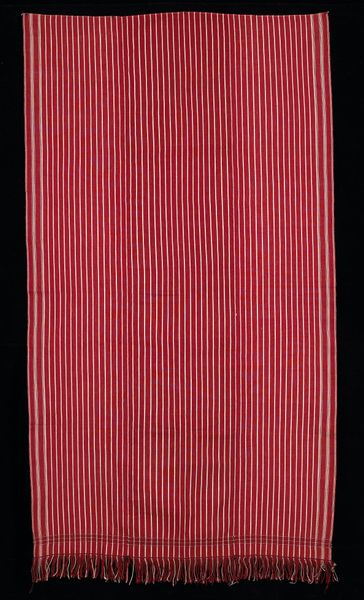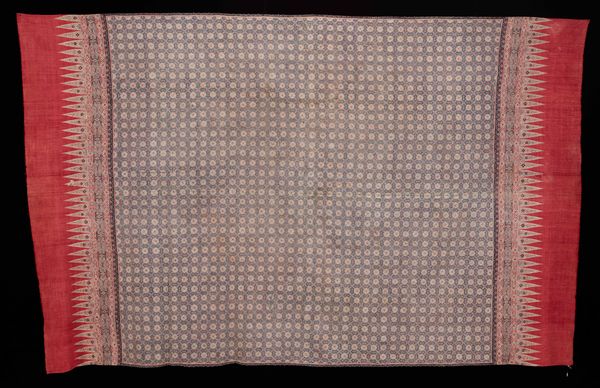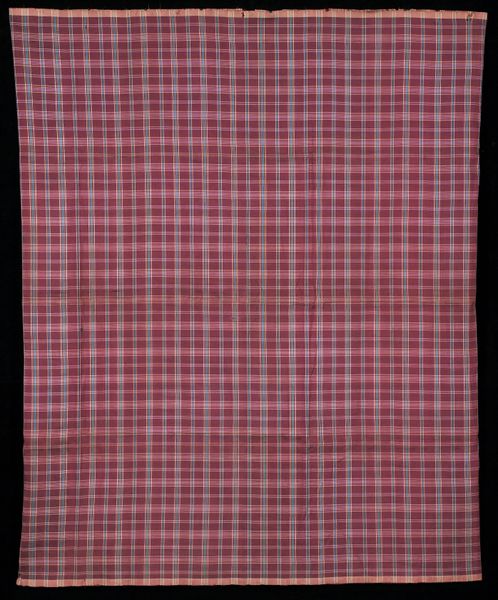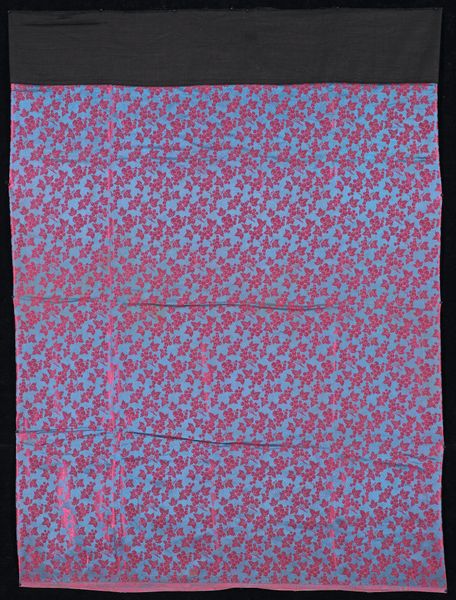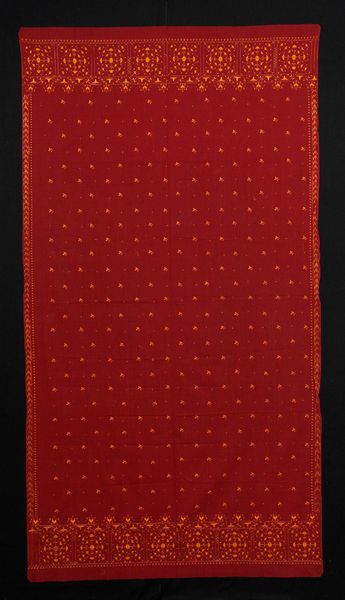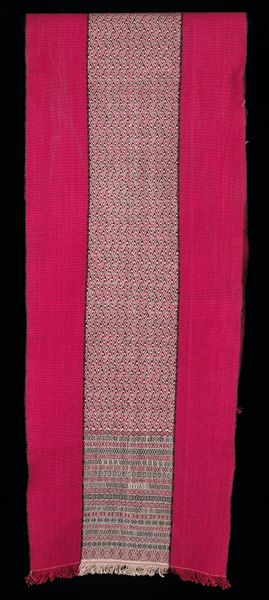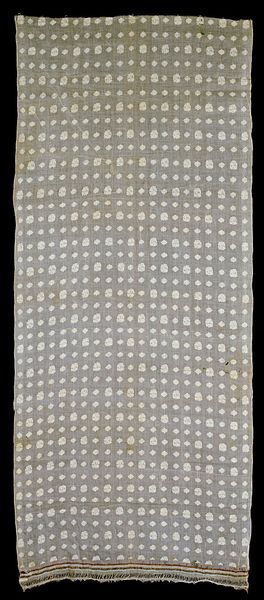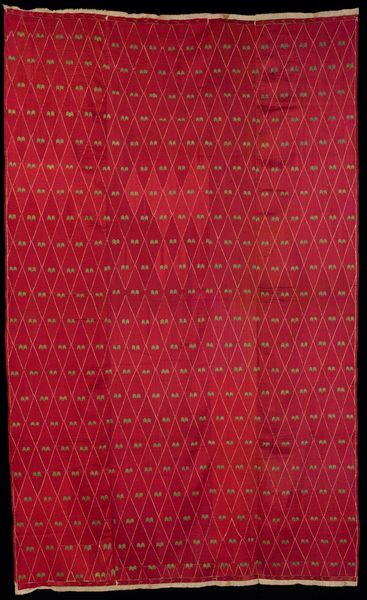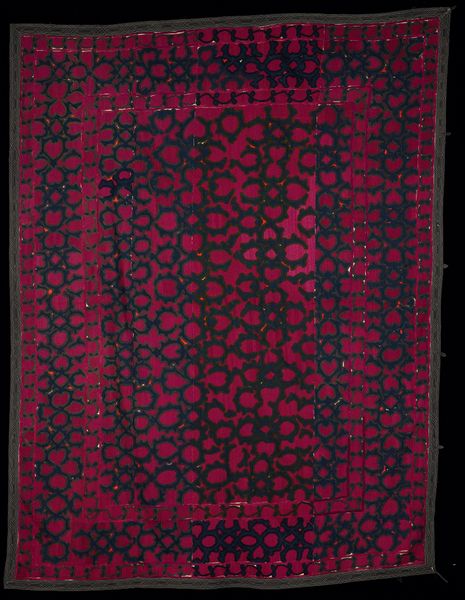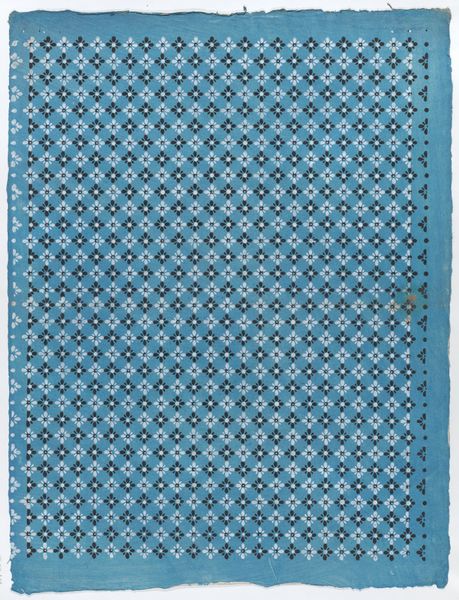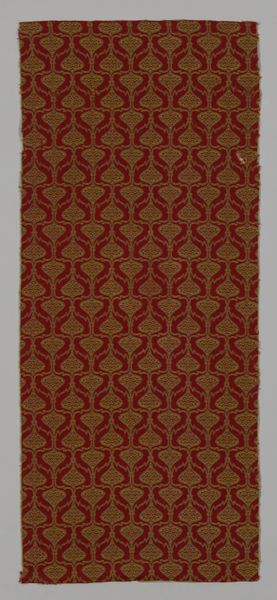
textile
#
random pattern
#
textile
#
geometric pattern
#
abstract pattern
#
minimal pattern
#
organic pattern
#
geometric
#
repetition of pattern
#
pattern repetition
#
decorative-art
#
layered pattern
#
combined pattern
#
repetitive pattern
Dimensions: 80 1/2 x 59 1/2 in. (204.47 x 151.13 cm)
Copyright: Public Domain
Curator: Ah, this crimson textile really grabs you, doesn't it? Editor: It's… hypnotic. Like a field of tiny, sparkling rubies. But there’s also something comforting about the repetition. Curator: This piece is titled "Head Cover (odni)," dating from around the 20th century. It is currently located here at the Minneapolis Institute of Art. The "odni" is crafted from cotton, showcasing geometric designs that draw inspiration from patterns and decoration, an element that resonates across art forms, challenging how labor and decorative patterns can signify cultural work. Editor: Interesting! Immediately, I see it's an anonymous creation, which invites a certain kind of speculation, a sort of blank canvas for imagination. Is this geometric pattern a coded language? Is there significance in this shade of red that feels both ancient and modern? It almost breathes; there's life there, not just in the color but the texture. Curator: Exactly, let’s consider the process, its potential maker. These cotton fibers tell a tale of cultivation and manual labor—and then of meticulous needlework. How was it made? And what about access to materials at the time of production and distribution of labor? All vital aspects to the art object we now have hanging here in front of us. Editor: It prompts us to reflect. Imagine, thousands of precise stitches. The slow work, meditation in motion… It also reflects how, within such constraint, something beautiful blossoms. The commitment of the hand is incredibly beautiful. You wonder who had the task and the reasons they devoted hours to the art piece, an act of profound, almost revolutionary artistry. Curator: I am curious how you feel knowing now what you didn't know before about the materiality of art and access to art? How the repetitive geometric design mirrors the systematic processes within labor at the time. Editor: Well, it makes me think about legacy… what parts of history and the working classes are lost to the archive…and those voices are finally, being centered. These works can be portals, if only we stop and look and honor them. Curator: Indeed. There's much to contemplate with this piece, isn't there? From labor to history and materials it really embodies so much of culture at the time. Editor: Absolutely. Next time, I'm definitely going to try wearing more color; It’s amazing what that small piece of fabric can evoke.
Comments
No comments
Be the first to comment and join the conversation on the ultimate creative platform.
